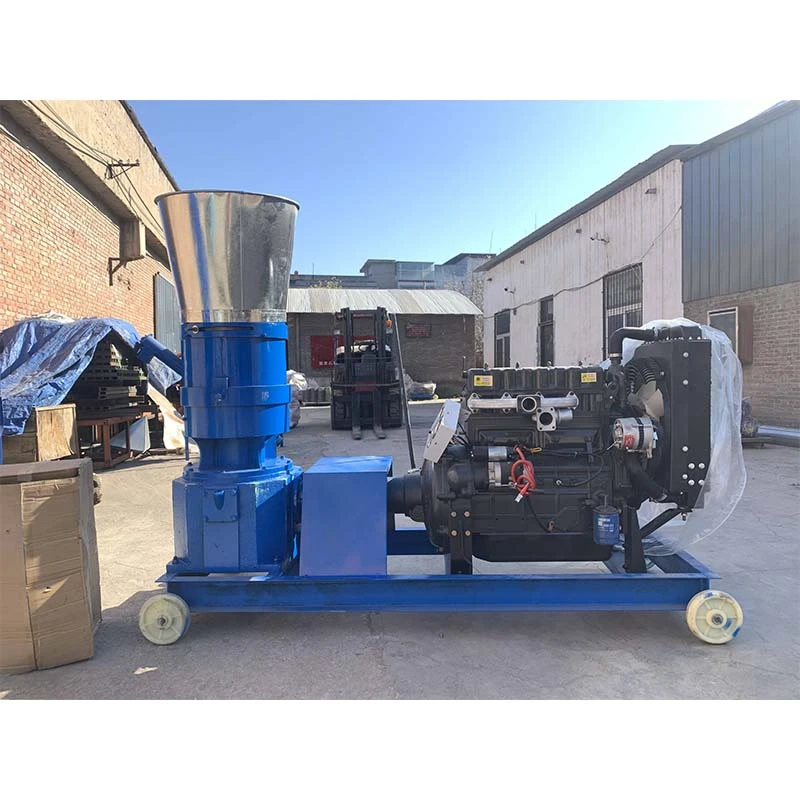pellet making machine for animal feed
Dec . 13, 2024 10:49 Back to list
pellet making machine for animal feed
The Importance of Pellet Making Machines for Animal Feed
In the modern agricultural landscape, the efficiency and quality of animal feed production are vital for maintaining a healthy livestock population. One of the key technologies revolutionizing this sector is the pellet making machine. These machines are designed specifically for producing high-quality feed pellets, which are essential for enhancing animal nutrition and ensuring optimal growth.
What Are Pellet Making Machines?
Pellet making machines are mechanical devices that compress raw feed ingredients into small, cylindrical shapes known as pellets. These machines utilize various methods, including die-and-roll systems, to process raw materials such as grains, legumes, and forage into a dense, uniform pellet. The resulting feed often boasts improved nutritional value, easier consumption, and reduced wastage.
Benefits of Pelletized Animal Feed
1. Improved Nutritional Value Pelleting feeds help in binding the nutrients together, ensuring that animals receive a consistent and concentrated supply of essential vitamins and minerals. This uniformity is critical for the overall health and productivity of livestock.
2. Enhanced Digestibility The pelleting process often includes steam treatment, which can improve the digestibility of certain ingredients, making nutrients more accessible to animals. This enhancement leads to better feed conversion ratios, meaning that animals can grow faster and healthier with less feed.
3. Reduction in Feed Waste Loose feed can result in significant wastage, especially in pigs and poultry. Pellets minimize spillage and encourage consumption, leading to better feed efficiency. This not only saves money but also contributes to more sustainable farming practices.
4. Convenience in Handling and Storage Pellets are easier to handle, store, and transport than bulk feed. Their compact size means that they take up less space, reducing storage costs and making them easier to deliver to farms.
5. Customization Pellet making machines can be adjusted to create different-sized pellets, catering to various livestock needs. This flexibility allows farmers to customize feed for specific species, ages, and production stages, ultimately promoting better health and growth rates.
pellet making machine for animal feed

The Process of Producing Animal Feed Pellets
The process of pelletizing animal feed typically involves several key steps
1. Raw Material Preparation The initial step involves grinding the raw materials into a fine powder. This step may include the addition of moisture and other binders to improve pellet formation.
2. Conditioning The ground materials are conditioned using steam or moisture to soften the ingredients. This process helps to enhance pelleting and improves the digestibility of the feed.
3. Pelleting In this crucial phase, the conditioned material is fed into the pellet making machine. As it passes through the die, it is compressed into pellets of desired sizes.
4. Cooling and Drying Once the pellets are formed, they are cooled to prevent spoilage. Proper cooling ensures that the pellets retain their shape and nutritional content.
5. Bagging and Storage Finally, the pellets are bagged for storage and distribution. Proper storage techniques are vital to maintain the quality of the feed.
Conclusion
Pellet making machines are indispensable tools in modern animal husbandry. They not only improve the efficiency of feed production but also enhance the nutritional quality of animal diets. As the demand for livestock products continues to rise, investing in advanced pellet making technology will be crucial for farmers aiming to meet the challenges of tomorrow’s agriculture. By embracing these innovations, livestock producers can ensure healthier animals, reduced costs, and more sustainable practices in the long run.
-
Hot Sale 24 & 18 Door Rabbit Cages - Premium Breeding Solutions
NewsJul.25,2025
-
Automatic Feeding Line System Pan Feeder Nipple Drinker - Anping County Yize Metal Products Co., Ltd.
NewsJul.21,2025
-
Automatic Feeding Line System Pan Feeder Nipple Drinker - Anping County Yize Metal Products Co., Ltd.
NewsJul.21,2025
-
Automatic Feeding Line System - Anping Yize | Precision & Nipple
NewsJul.21,2025
-
Automatic Feeding Line System - Anping Yize | Precision & Nipple
NewsJul.21,2025
-
Automatic Feeding Line System-Anping County Yize Metal Products Co., Ltd.|Efficient Feed Distribution&Customized Animal Farming Solutions
NewsJul.21,2025






